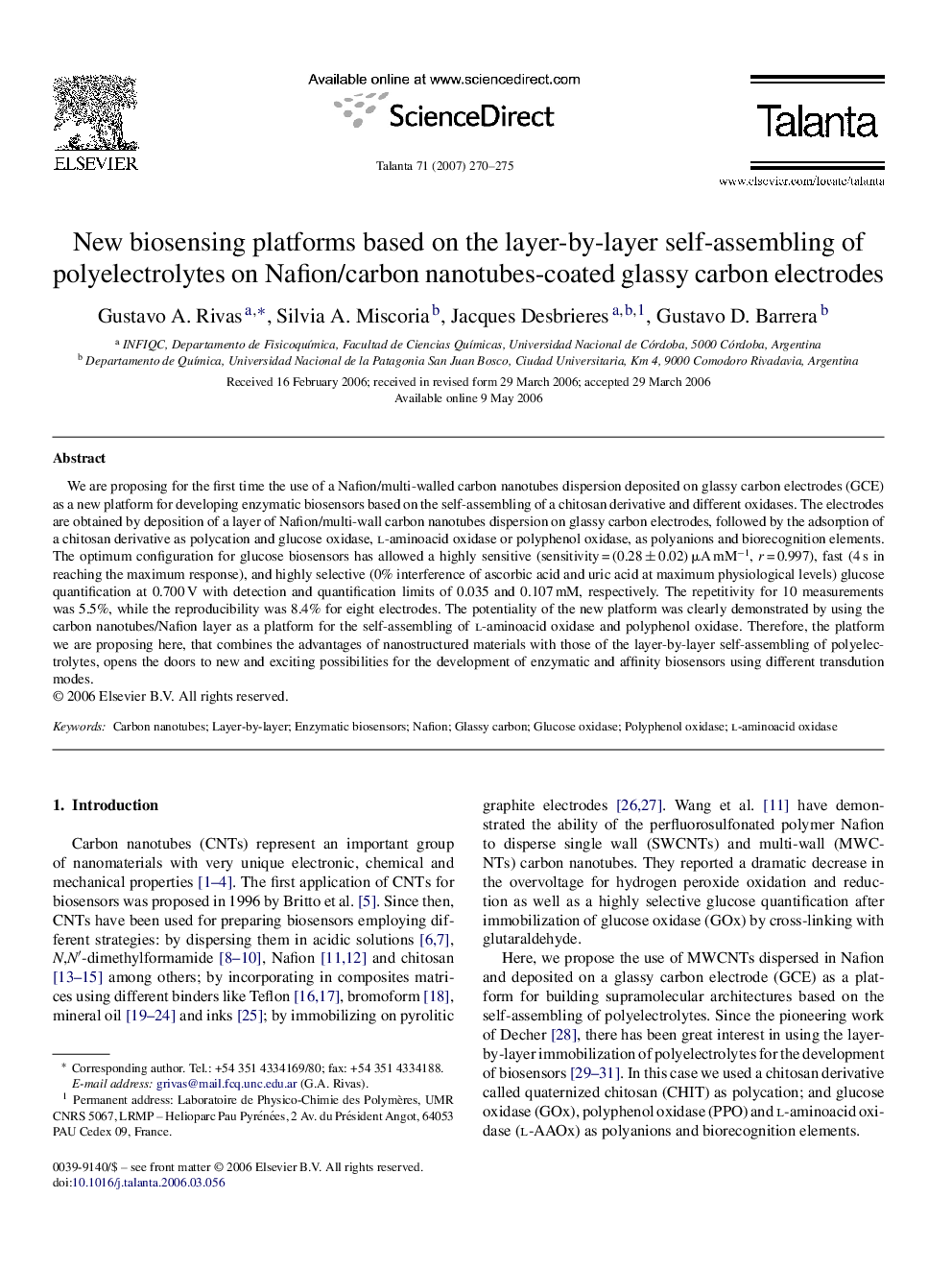| Article ID | Journal | Published Year | Pages | File Type |
|---|---|---|---|---|
| 1246067 | Talanta | 2007 | 6 Pages |
We are proposing for the first time the use of a Nafion/multi-walled carbon nanotubes dispersion deposited on glassy carbon electrodes (GCE) as a new platform for developing enzymatic biosensors based on the self-assembling of a chitosan derivative and different oxidases. The electrodes are obtained by deposition of a layer of Nafion/multi-wall carbon nanotubes dispersion on glassy carbon electrodes, followed by the adsorption of a chitosan derivative as polycation and glucose oxidase, l-aminoacid oxidase or polyphenol oxidase, as polyanions and biorecognition elements. The optimum configuration for glucose biosensors has allowed a highly sensitive (sensitivity = (0.28 ± 0.02) μA mM−1, r = 0.997), fast (4 s in reaching the maximum response), and highly selective (0% interference of ascorbic acid and uric acid at maximum physiological levels) glucose quantification at 0.700 V with detection and quantification limits of 0.035 and 0.107 mM, respectively. The repetitivity for 10 measurements was 5.5%, while the reproducibility was 8.4% for eight electrodes. The potentiality of the new platform was clearly demonstrated by using the carbon nanotubes/Nafion layer as a platform for the self-assembling of l-aminoacid oxidase and polyphenol oxidase. Therefore, the platform we are proposing here, that combines the advantages of nanostructured materials with those of the layer-by-layer self-assembling of polyelectrolytes, opens the doors to new and exciting possibilities for the development of enzymatic and affinity biosensors using different transdution modes.
